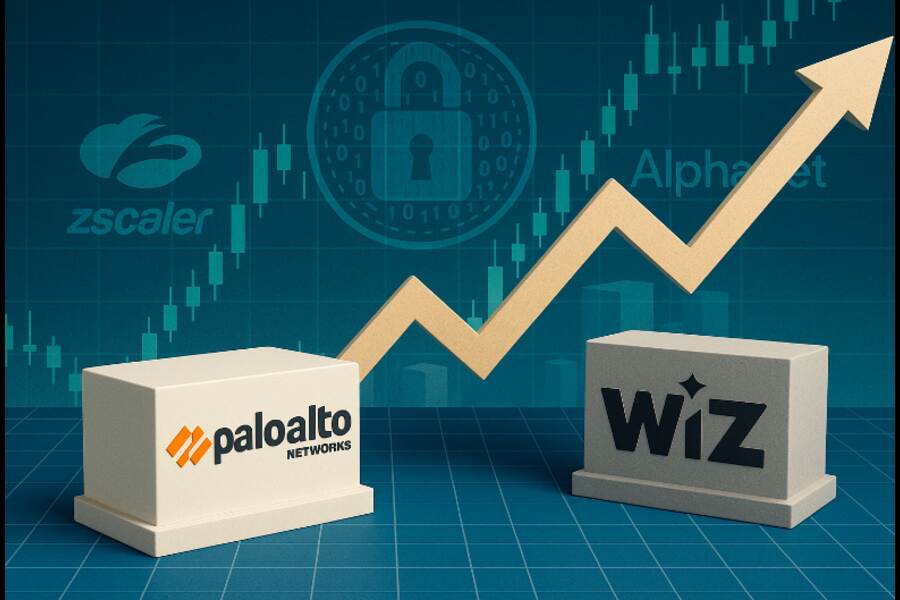The cybersecurity industry is undergoing a significant transformation, marked by a surge in mergers and acquisitions (M&A) activity. This consolidation trend is driven by the escalating complexity of cyber threats, the integration of artificial intelligence (AI) and machine learning (ML) into security solutions, and the strategic maneuvers of leading companies aiming to enhance their market positions. At the forefront of this movement is Palo Alto Networks, a company that has strategically leveraged M&A to expand its capabilities and influence in the cybersecurity landscape.
The Surge in Cybersecurity M&A Activity
In the first quarter of 2025, the cybersecurity sector witnessed a notable increase in M&A transactions. According to PitchBook data, there were 46 M&A deals among U.S. cybersecurity companies, up from 35 in the same period the previous year. Globally, 102 M&A deals were recorded in Q1 2025, compared to 95 in Q1 2024. This uptick reflects the industry’s response to evolving cyber threats and the need for more comprehensive security solutions.
Several high-profile acquisitions have underscored this trend. Alphabet, Google’s parent company, announced its acquisition of cybersecurity startup Wiz for approximately $32 billion, marking its largest deal to date. This move aims to bolster Google’s cloud security offerings and position it competitively against rivals like Amazon and Microsoft.
Similarly, Zscaler, a cloud-based information security company, reported strong fiscal third-quarter 2025 results and announced its acquisition of Red Canary, a provider of managed threat detection and response services. This acquisition is expected to enhance Zscaler’s security operations platform.
Palo Alto Networks: Strategic M&A for Growth
Palo Alto Networks has been a prominent player in the cybersecurity M&A landscape, executing a series of strategic acquisitions to expand its product offerings and address emerging security challenges. Under the leadership of CEO Nikesh Arora, the company has transformed from a firewall provider to a comprehensive cybersecurity platform.
One of the company’s significant acquisitions includes the purchase of Protect AI, a Seattle-based startup specializing in AI and ML security. Founded in 2022, Protect AI helps organizations monitor the various layers and components of machine learning systems. The acquisition, valued at over $500 million, is expected to close later this year and will strengthen Palo Alto Networks’ capabilities in securing AI-driven technologies.
Additionally, in September 2024, Palo Alto Networks acquired IBM’s QRadar SaaS assets. This move has already yielded promising results, with over $80 million in bookings from QRadar customers migrating to the company’s Cortex XSIAM platform.
These acquisitions align with Palo Alto Networks’ strategy to address the dynamic attack surfaces created by the proliferation of AI and cloud technologies. By integrating Protect AI’s solutions, the company aims to enhance its Prisma AI Risk Security (AIRS) platform, providing comprehensive protection for AI and ML systems.
The Rationale Behind the M&A Boom
Several factors are driving the surge in cybersecurity M&A activity:
- Evolving Threat Landscape: Cyber threats are becoming more sophisticated, necessitating advanced and integrated security solutions.
- AI and ML Integration: The adoption of AI and ML in cybersecurity is creating new opportunities and challenges, prompting companies to acquire specialized firms to enhance their capabilities.
- Regulatory Environment: A more balanced antitrust enforcement approach by the U.S. Federal Trade Commission (FTC) is providing companies with greater clarity and predictability in pursuing mergers.
- Market Consolidation: Companies are seeking to consolidate their positions in the market by acquiring firms that offer complementary technologies and services.
Looking Ahead
The cybersecurity M&A boom is expected to continue as companies strive to stay ahead of emerging threats and technological advancements. Palo Alto Networks’ strategic acquisitions demonstrate how firms can effectively leverage M&A to expand their capabilities and address the evolving needs of the cybersecurity landscape.
As the industry continues to evolve, we can anticipate further consolidation and innovation, driven by the imperative to protect against increasingly complex cyber threats.

